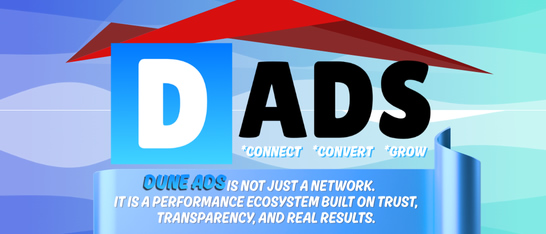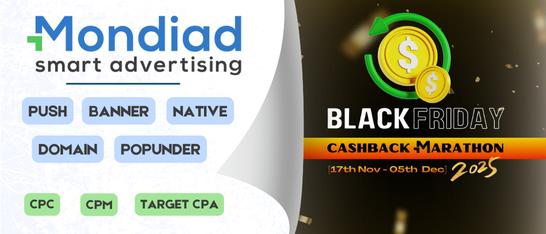The best CPA offers for credit card signups in 2025 depend on GEO, issuer policy, user profile (prime vs. subprime), and allowed traffic (SEO/email/social) from a network with clear targeting rules, responsive managers, stable EPC reporting, and scaling.
Key takeaways
Fit over hype. Evaluate offers by GEO + issuer rules + allowed traffic + audience profile; avoid “one best list” thinking.
Bank-safe wording wins. No “pre-approved/guaranteed”; use “check eligibility,” disclose typical fees/APR ranges.
Pre-lander = approvals. Education + eligibility on a pre-lander usually improves form completion and approval mix.
Parallel monetization. When cards under-approve, route users to credit repair or debt consolidation paths that match their profile.
Operate by metrics. Track Impr → CTR → Pre-lander CR → Apply → Approval rate → EPC. Iterate one lever at a time.
Documentation. Keep screenshots of allowed-traffic policies and banned terms for each issuer/offer.
What counts as credit & debt affiliate offers (and payouts)
Credit cards. These are issuer-approved signups, including secured/unsecured, starter/prime, co-brands. Payouts may be CPL (qualified app) or CPA (approved signup), often with an issuer verification lag.
Credit repair. CPL/CPA on booked consults or plan starts; often better fit for users with low scores or recent denials.
Debt consolidation/relief. CPL/CPS on qualified consults; requires careful intake and transparent, compliant wording.

Common payout models:
Qualified application (CPL/CPA): valid, complete app submitted.
Approved signup: paid when the issuer approves.
Qualified consult/sale (repair/consolidation): booked consult or plan activation.
Expect delayed confirmations for cards—plan reporting and cashflow around that lag.
Approval drivers: Eligibility (income, score bands, recent delinquencies), correct product matching (secured vs prime), and friction (mobile form UX). Content clarity and accurate expectations reduce denials.
Work with compliant credit & debt offers on Leadgid — Sign up.
Choosing offers & networks (bank-safe criteria)
Use a scoring sheet instead of chasing brand names:
Policy visibility. Do’s/don’ts written down, list of banned phrases, and sample compliant copy.
Allowed traffic detail. Explicit rules for SEO, permissioned email, social/native; landing rules (direct vs. pre-lander).
Audience fit. Products across the spectrum (secured, starter cards, repair, consolidation) so you can route users correctly.
Payout stability & currencies. Clear schedule, currency options, and clawback rules.
Reporting & API. Real-time dashboards, exports, postbacks; API for automated QA.
Manager support. Fast feedback on denials, guidance on GEO-specific wording.
Localization. Currency, APR ranges, fee terminology per country.
For newcomers, start with a broad catalogue and a manager who will review your funnel and share anonymized approval feedback.
Allowed traffic & compliant flows (cards/repair/debt)
SEO (if allowed). Build intent pages (“best secured cards in [GEO]”, “how to rebuild credit”) that set expectations. Send users to a pre-lander with eligibility bullets and APR/fee guidance before the issuer page.
Email (permissioned, if allowed). Educational sequence (utilization, payment timing, fees) → pre-lander → issuer. Suppress non-engagers; comply with local email laws.
Social/UGC (if allowed). Educational shorts (benefits/requirements) → link-in-bio → pre-lander. Keep overlays and captions compliant.
Wording guardrails. Avoid “guaranteed”, “pre-approved”, or unverified APR/fee promises. Prefer “check eligibility”, “typical ranges”, “subject to issuer approval”. Link issuer T&Cs; add responsible-borrowing/credit-education notes.
Funnel patterns that work (i.e. How to promote credit card offers as an affiliate)
Card comparison hub → filter by annual fee/APR/secured; each card title links to a pre-lander with eligibility bullets and “how to apply safely” notes.
Decision explainer: “Repair vs consolidation vs secured card” → three tiles leading to the right intake. Users denied for cards get routed to repair/consolidation.
Bad-credit path: content hub for rebuilding credit (secured cards, budgeting basics, on-time payment calendar) → repair consult offer → later card upgrade content.
Benchmarks & optimization (cards vs repair vs debt)
Metrics to track weekly aka starting ranges (calibration, not promises; adjust by GEO/source):
CTR (SEO cards): 2–5%
Pre-lander CR: 15–30% (education + eligibility lifts this)
Apply rate: 25–45% from pre-lander to issuer/app
Approval rate: varies by product/profile; secured > starter > prime
EPC: build a week-1 baseline; trend it up via approval mix
Levers that lift the average EPC for credit and debt CPA offers:
Match product to profile (secured for thin/no credit; repair/consolidation for high utilization/late payments).
Tighten wording to bank-safe language; remove friction on mobile; shorten forms.
Ask weekly for top denial reasons; update eligibility bullets accordingly.
Split content by intent (apply now vs. learn/repair first).
Mini “How-to” — first 5 steps
Pick one GEO + one sub-vertical (cards or repair or consolidation). Don’t mix tests at the start.
Confirm allowed traffic in writing for that GEO; list banned phrases in your doc; share with your team/designer.
Build the pre-lander: eligibility bullets, fees/APR ranges in plain language, issuer disclaimers, links to T&Cs, responsible-borrowing note.
Launch one channel and angle for 7–14 days; budget for issuer lag; monitor the full metric chain.
Weekly review with your manager: denials, drop-offs, device issues; route non-qualified users to repair/consolidation; iterate one change at a time.
Common mistakes & quick fixes
“Pre-approved” language. Replace with “check eligibility”; add issuer disclaimers and APR/fee ranges.
Direct-linking without education. Insert a pre-lander to set expectations and reduce denials.
Single-track monetization. If card approvals stay low, route to repair or consolidation instead of burning the budget.
Ignoring issuer lag. Communicate that approvals post later; align reporting windows.
Friction on mobile. Compress assets, simplify forms, fix tap targets; monitor drop-offs by device.
No policy receipts. Save screenshots/PDFs of allowed-traffic policies and banned terms per offer.
Ready to launch a bank-safe flow? Start with a pre-lander and issuer-approved wording. Leadgid helps you implement and measure.




































